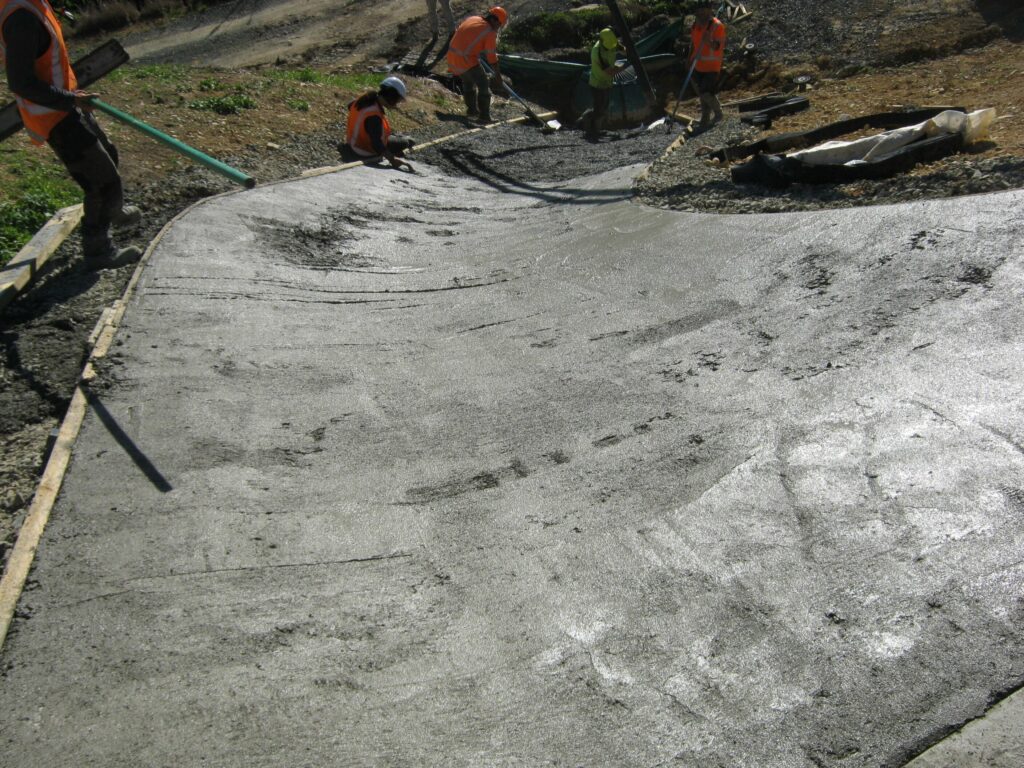Concrete
Understanding concrete
Concrete is the foundation of the construction industry. It is not an independent material, this means concrete is a mixture of some components. Together, these components form a robust, thick slurry that hardens over time. When water and aggregate are mixed with a powder called cement, an excellent binding agent, it forms concrete. Mixing water with cement goes through hydration, a chemical reaction, causing the slurry to solidify like a rock.

Applications of concrete
The most important property is that it offers exceptional durability and strength. Listed below are various applications of concrete:
- Backbone of structures: Concrete is the backbone of structures. It gives a structure durability, stability, and strength. Concrete is used at every stage, from building the foundations to creating a structure.
- Kin-pin of mega projects: Concrete is the most reliable construction material for mega projects like airports, railway stations, sky-rise multi-storeys, highways, etc. It enables these mega-structures to bear unlimited heavy loads.
- Precast: Concrete is efficient in constructing the engineer’s trusted choice for precasting. Precast concrete is used for building walls, roofs, furniture, and other exteriors.
- Architectural precision: Not only engineers but architects also place their trust in concrete. Nowadays, modern architecture requires concrete for aesthetic looks and elegant exteriors.
- Miscellaneous uses: Concrete is a valuable material in construction, but it also plays a good role in ready-made houses requiring drainage systems and other amenities like a swimming pool.
Importance of concrete
Factors that contribute to concrete’s importance in the construction are as follows:
- Concrete offers exceptional durability and strength as it can resist compression. Hence, concrete is the best choice for constructing long-lasting buildings.
- The concrete mixture is usually semi-solid, making it easy to take any shape. This makes it a versatile material that can be forged into any shape and used for sealing even small gaps.
- One other factor that makes concrete a vital construction material is its affordability. Concrete is an economical choice for engineers as compared to other construction materials. This is why it is widely used in mega-projects.
- Concrete is fire-resistant, safe, and durable compared to other construction materials like steel or wood.
- Concrete is a recyclable material. It can be recycled and reused. Hence, it is a sustainable and environment-friendly construction material.
Types of concrete
- Reinforced concrete: Reinforced concrete is usually used to construct skyscrapers and heavy structures like bridges, airports, and railway stations. It is strengthened with mesh and steel bars to increase its durability.
- Lightweight concrete: This type of concrete is ideally used for constructing structures that require durability and lightweight. It is light in weight compared to other kinds of concrete. It is used for precasting walls, roofs, and pavements.
- High-strength concrete: High-strength concrete is used for constructing mega-projects involving bridges, dams, skyscrapers, or townships. Its compressive strength is more than 40 MPa, making it more durable and long-lasting.
- High-performance concrete: This is specially created with enhanced properties such as superior strength, increased durability and resistance to every extremity. It is mainly used to construct structures more prone to natural calamities and require more durability and strength.
- Precast concrete: When pre-manufactured concrete is transported directly to the construction site, it is called precast concrete. It is more advantageous than traditional concretes as it offers less construction time and more quality control. Precast concrete is usually used for windows, door hinges, panels, walls and beams.
Composition of concrete mix
To understand the composition of concrete, we must know the materials mixed together to make this remarkable construction material.
The concrete mix is made with four essential ingredients, which are as follows:
- Cement or lime, which are binding materials
- Aggregates: There are two types of aggregates which comprise the concrete mix: sand (fine aggregate) and stone or brick chips (coarse aggregates)
- Water
- Pozzolana, also called admixture
Let’s further understand each of these materials and the role they play in the concrete mix:
- Binding material: Cement or lime is considered a binding material. When mixed with water, a slurry is formed. After drying, it solidifies and makes a durable, tough, stone-like surface coating.
- Aggregates: the aggregates usually comprise brick or stone shaves, gravel, and sand. Aggregate gives a coarseness to concrete mix. It helps to hold the cement or lime slurry.
- Water: The binding agent between the binding material and aggregates is water. It plays an important role in determining the texture of concrete material.
The primary ratio of mixing these materials is 10-20-30-40, where 10% is cement, 20% is admixture, 30% is sand, and 40% is aggregates.
